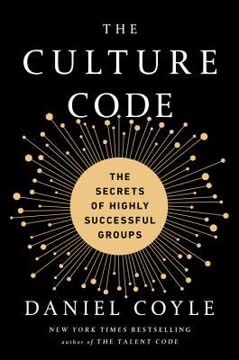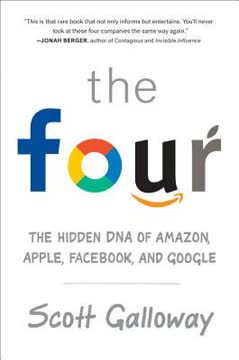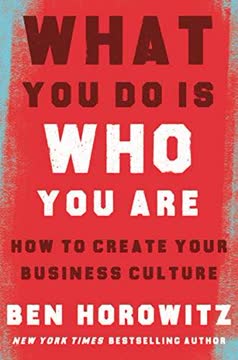Key Takeaways
1. Mission-driven culture fosters innovation and employee satisfaction
"If you believe people are fundamentally good, then as an entrepreneur, team member, team leader, manager, or CEO, you should act in a way that's consistent with your beliefs."
Culture eats strategy for breakfast. Google's success is rooted in its mission-driven culture, which emphasizes three key aspects: a meaningful mission, transparency, and employee voice. This culture attracts and retains top talent, fostering innovation and satisfaction.
- Mission: "To organize the world's information and make it universally accessible and useful"
- Transparency: Open communication, including weekly all-hands meetings (TGIF) with Q&A sessions
- Employee voice: Encouraging feedback and ideas through various channels, including the annual Googlegeist survey
By aligning employees with a higher purpose and giving them a say in company decisions, Google creates an environment where people are motivated to do their best work and feel valued as individuals.
2. Hiring the best talent requires unconventional methods and patience
"Only hire people who are better than you."
Quality over quantity in hiring. Google's approach to hiring is rigorous and unconventional, focusing on finding the best talent rather than filling positions quickly. This process involves:
- Structured interviews with specific questions and scoring rubrics
- Peer interviews and feedback
- Hiring committees to ensure objectivity
- Multiple rounds of review, including executive-level approval
Google's hiring philosophy emphasizes:
- Hiring for potential and learning ability over specific skills
- Looking for candidates who are better than existing team members
- Willingness to leave positions open until the right candidate is found
This approach may seem time-consuming, but it results in higher-quality hires who contribute more value to the organization in the long run.
3. Transparency and employee voice are crucial for organizational success
"Default to open is a phrase sometimes heard in the open-source technology community... Restricting information should be a conscious effort, and you'd better have a good reason for doing so."
Open communication builds trust. Google prioritizes transparency and employee voice as key elements of its culture. This approach includes:
- Sharing company information widely, including product roadmaps and board presentations
- Encouraging open debate and disagreement
- Soliciting employee feedback through various channels, including the annual Googlegeist survey
Benefits of transparency and employee voice:
- Increased trust between management and employees
- Better decision-making through diverse perspectives
- Higher employee engagement and ownership
While there are risks to such openness, such as potential leaks, Google finds that the benefits far outweigh the costs in terms of employee satisfaction and organizational effectiveness.
4. Performance management should focus on development, not just evaluation
"Separate in space and time conversations about whether a goal has been achieved."
Develop, don't just evaluate. Google's approach to performance management emphasizes continuous development rather than just annual evaluations. Key aspects include:
- Separating development conversations from performance reviews
- Using peer feedback and calibration to ensure fairness
- Focusing on the two tails: helping low performers improve and learning from top performers
Google's performance management process:
- Set clear goals (OKRs - Objectives and Key Results)
- Provide ongoing feedback and coaching
- Conduct calibrated performance reviews
- Separate compensation discussions from development conversations
This approach helps employees focus on growth and improvement rather than just hitting performance targets, leading to better long-term results for both individuals and the organization.
5. Pay unfairly: Recognize and reward exceptional performance
"Your best people are better than you think, and worth more than you pay them."
Reward impact, not tenure. Google's compensation philosophy recognizes that top performers can have outsized impact and should be rewarded accordingly. This approach includes:
- Wide variations in pay based on performance
- Stock grants for all employees, not just executives
- Experiential rewards in addition to monetary compensation
Key principles of Google's compensation approach:
- Paying for performance, not just tenure or level
- Recognizing that top performers may be worth 300x more than average
- Using data to inform compensation decisions
While this approach may seem unfair, it helps retain top talent and motivates employees to strive for excellence. It's crucial to communicate the rationale behind pay decisions to maintain trust and transparency.
6. Create a learning environment through deliberate practice and peer teaching
"The best way to learn is to teach."
Learn by doing and teaching. Google fosters a culture of continuous learning through programs that encourage deliberate practice and peer teaching. Key initiatives include:
- G2G (Googler2Googler) program for peer-led classes
- Tech Talks and guest speaker series
- Experimentation and "20% time" for personal projects
Benefits of this learning approach:
- Increased knowledge sharing across the organization
- Development of teaching and communication skills
- Foster innovation through cross-pollination of ideas
By creating an environment where learning is constant and accessible, Google helps employees grow their skills and stay engaged, while also benefiting from the collective knowledge of the organization.
7. Nudges can significantly improve employee health, wealth, and productivity
"A nudge, as we will use the term, is any aspect of the choice architecture that alters people's behavior in a predictable way without forbidding any options or significantly changing their economic incentives."
Small changes, big impact. Google uses behavioral economics principles to "nudge" employees towards better decisions in health, wealth, and productivity. Examples include:
- Redesigning cafeteria layouts to encourage healthier eating
- Simplifying 401(k) enrollment to increase participation
- Sending timely reminders for important tasks or deadlines
Effective nudges at Google:
- Placing healthier foods at eye level in cafeterias
- Pre-populating retirement savings forms with higher contribution rates
- Sending "just-in-time" emails to managers before new hires start
These small interventions can lead to significant improvements in employee well-being and productivity without restricting choice or imposing mandates.
8. Balance frugality and generosity in employee benefits
"We provide many unusual benefits for our employees, including meals free of charge, doctors and washing machines... Expect us to add benefits rather than pare them down over time."
Strategic generosity. Google's approach to benefits balances frugality with strategic generosity. The company focuses on providing benefits that:
- Improve efficiency (e.g., on-site services)
- Foster community (e.g., sports teams, interest groups)
- Promote innovation (e.g., 20% time)
Examples of Google's strategic benefits:
- Free meals and snacks to encourage collaboration and save time
- On-site fitness centers and classes to promote health and work-life balance
- Death benefits to provide peace of mind for employees and their families
By carefully choosing benefits that align with company values and employee needs, Google creates a supportive environment that attracts and retains top talent while maintaining cost-effectiveness.
9. Admit and learn from mistakes to build a resilient organization
"Admit your mistake. Be transparent about it."
Embrace failure as a learning opportunity. Google recognizes that mistakes are inevitable in a fast-paced, innovative environment. The company's approach to handling mistakes includes:
- Openly admitting and discussing failures
- Conducting post-mortems to learn from errors
- Encouraging calculated risk-taking
Steps for handling mistakes at Google:
- Acknowledge the error transparently
- Analyze what went wrong and why
- Implement changes to prevent similar issues in the future
- Share lessons learned with the broader organization
This approach helps create a culture where employees feel safe taking risks and innovating, knowing that failures will be treated as learning opportunities rather than career-ending events.
10. Empower employees by removing managerial roadblocks
"Give your people slightly more trust, freedom, and authority than you are comfortable giving them. If you're not nervous, you haven't given them enough."
Trust your people. Google aims to empower employees by reducing managerial control and bureaucracy. This approach includes:
- Limiting managers' unilateral decision-making power
- Encouraging bottom-up innovation and problem-solving
- Providing resources and support for employee-driven initiatives
Ways Google empowers employees:
- 20% time for personal projects
- Employee-run programs like G2G (Googler2Googler)
- Flat organizational structure with minimal hierarchy
By trusting employees and giving them the freedom to pursue their ideas, Google fosters a culture of innovation and ownership. This approach requires managers to act more as facilitators and coaches rather than traditional bosses, leading to higher employee satisfaction and productivity.
Last updated:
FAQ
What's Work Rules! about?
- Insights from Google: Work Rules! by Laszlo Bock offers a deep dive into Google's innovative people management practices, emphasizing a high-freedom, high-performance workplace.
- Transformative Leadership: The book outlines how leaders can create a culture that fosters creativity and collaboration, leading to better business outcomes.
- Practical Applications: Bock provides real-world examples and actionable strategies that can be applied in any organization, regardless of size or industry.
Why should I read Work Rules!?
- Innovative Management Practices: The book provides insights into Google's successful management practices, which can be adapted to other organizations.
- Focus on People: Emphasizing employee well-being and satisfaction, the book offers strategies to improve retention and engagement.
- Research-Backed Strategies: Bock supports his recommendations with research, making the book both informative and credible.
What are the key takeaways of Work Rules!?
- Empower Employees: Giving employees autonomy and a voice leads to higher engagement and productivity.
- Data-Driven Decisions: Using data to inform management decisions helps minimize bias and improve outcomes.
- Continuous Learning: Fostering a culture of continuous learning and development is crucial for organizational growth.
What are the best quotes from Work Rules! and what do they mean?
- Transparency and Trust: “If you believe people are fundamentally good, you must be unafraid to share information with them.” This highlights the importance of transparency in fostering a collaborative culture.
- Casual Professionalism: “You can be serious without a suit.” This suggests that a relaxed environment can still yield serious results.
- High Expectations: “Expect a lot… and you’ll get a lot.” This encourages leaders to set ambitious goals for their teams.
How does Google’s hiring process work according to Work Rules!?
- Rigorous Selection: Google uses a thorough hiring process with multiple interviews to ensure high-quality hires.
- Data-Driven Approach: Structured interviews and peer feedback are used to evaluate candidates objectively.
- Culture Fit: Emphasis is placed on finding candidates who align with Google's culture and values.
What is the significance of Project Oxygen in Work Rules!?
- Manager Quality Matters: Project Oxygen showed that good managers significantly enhance employee satisfaction and productivity.
- Eight Key Attributes: The project identified key attributes of effective managers, such as being a good coach.
- Data-Driven Insights: The project used data from surveys and ratings to draw conclusions, reinforcing evidence-based management.
How does Work Rules! suggest improving performance management?
- Separate Conversations: Performance evaluations should be separate from development discussions to encourage honest feedback.
- Focus on Growth: Emphasizing personal growth fosters a culture of continuous improvement.
- Use of Peer Feedback: Incorporating peer feedback provides a more comprehensive view of an employee’s contributions.
How does Work Rules! address the concept of employee empowerment?
- Decentralized Decision-Making: The book advocates for allowing employees to make decisions, fostering ownership and accountability.
- Encouraging Initiative: Creating an environment where employees feel safe to propose changes leads to greater innovation.
- Trusting Employees: Trusting employees to manage their work enhances job satisfaction and performance.
What specific methods does Bock recommend in Work Rules!?
- Project Oxygen: Identified key behaviors of effective managers, leading to a framework for training and evaluation.
- Performance Management: Advocates for separating evaluations from developmental conversations for constructive dialogue.
- Data-Driven Decisions: Emphasizes using data to inform decisions, improving objectivity and outcomes.
How does Work Rules! address the concept of company culture?
- Culture as a Foundation: A strong company culture is essential for attracting and retaining top talent.
- Empowerment and Trust: A culture that empowers employees leads to higher engagement and innovation.
- Continuous Improvement: Culture should be dynamic and adaptable, evolving with the organization.
What mistakes does Bock highlight in Work Rules!?
- Overemphasis on Control: Traditional management practices focusing on control can stifle creativity and engagement.
- Failure to Listen: Ignoring employee feedback can lead to dissatisfaction and disengagement.
- Neglecting Development: Confusing performance management with development can hinder growth and motivation.
How can I implement the ideas from Work Rules! in my organization?
- Start Small: Implement one or two recommendations, such as increasing transparency or empowering employees.
- Foster Open Communication: Create channels for employees to share ideas and feedback.
- Measure and Adjust: Use data to track changes and adapt based on feedback and performance metrics.
Review Summary
Work Rules! receives mostly positive reviews for providing valuable insights into Google's HR practices. Readers appreciate the data-driven approach, practical advice, and transparency about successes and failures. Many find it useful for improving workplace culture and management techniques. Some criticize the book for being overly promotional of Google or containing obvious ideas. Overall, reviewers recommend it for HR professionals, managers, and those interested in modern workplace practices, though some suggest it could have been more concise.
Similar Books










Download PDF
Download EPUB
.epub digital book format is ideal for reading ebooks on phones, tablets, and e-readers.




